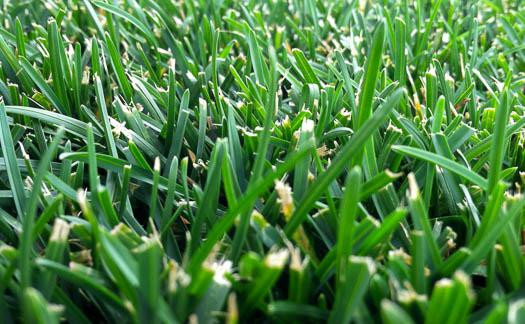
Like perennial ryegrass and tall fescue, KBG grows essentially the most inside the spring and the fall. In gentle climates, it could possibly mature throughout the summer time and winter also.
Kentucky bluegrass generally dominates year-very long grazed riparian regions. It provides small safety for streambanks with its shallow root procedure, and lender failure is prevalent on Kentucky bluegrass web pages, producing channel degredation and sedimentation in streams. On these parts, it can be an indicator of very poor management of recreation or grazing.
Nitrogen utilized too early will press the grass too tough mainly because it comes from dormancy and deplete carbohydrate reserves. This tends to weaken the grass and allow it to be far more liable to drought tension, insects, and condition.
Kentucky bluegrass is the ideal turfgrass for homeowners who need a lush, eco-friendly garden that’s resilient to foot targeted traffic.
When it is probably not "vital," it is vitally helpful to overseed Kentucky bluegrass. Such a grass needs frequent routine maintenance and reseeding so that you can continue being nutritious and robust.
the panicle is relatively to quite congested (crowded), and the branches might not be Plainly seen without having near inspection
Is Kentucky bluegrass tough to expand? Kentucky bluegrass isn’t always hard to mature, but it's essential to do many operate to get a prize-profitable lawn. You’ll be consistently watering, mowing, and fertilizing. Exactly how much sunlight does Kentucky bluegrass really need to increase? Kentucky bluegrass does very best when developed in full Sunshine.
Leaf blades in many cases are crinkled part way down and vary from 1 to 3 inches very long with typical Poa boat-shaped leaf ideas. The more info inflorescence (flowering framework) has branched seed clusters (panicles) which have been one to four inches long. Seed clusters, also called seed heads, can type the moment plants are six weeks old; although This could happen from early fall via early summer, most seed heads are fashioned in spring.
Lawns established from sod generally consist largely of Kentucky Bluegrass. If this sod is laid inside a shady backyard, the Kentucky Bluegrass will not prosper and overseeding which has a shade tolerate grass like Great Fescue is usually recommended.
Handful of postemergent herbicides are registered for use in proven ornamental plantings. Clethodim, fluazifop, and sethoxydim are selective for grass weeds and Risk-free on broadleaf ornamentals, but only clethodim has any impact on annual bluegrass. Spot treatment with diquat, glufosinate, glyphosate, nonanoic acid, or other nonselective herbicides can lessen once-a-year bluegrass populations in ornamental beds, but Serious treatment is necessary to circumvent herbicide spray or drift on to desirable crops, or perhaps the herbicides will injure the plants. Clethodim and glufosinate are offered only to certified applicators presently.
You’ve possible found this advice ahead of. It’s generally known as deep but infrequent watering. It helps to persuade the grass roots to improve deeper searching for h2o. The roots will increase stronger and become far better at handling intervals of drought.
Keep an eye on precipitation accumulation after your irrigation procedure has long been winterized. If it’s a dry slide, you could have to hand drinking water.
Copyright: different copyright holders. To reuse a picture, you should click it to discover who you need to contact.
Perennial rye can cope with chilly and shade, and it is compatible for lawns across the nation. It makes a great turf when combined with bluegrass.